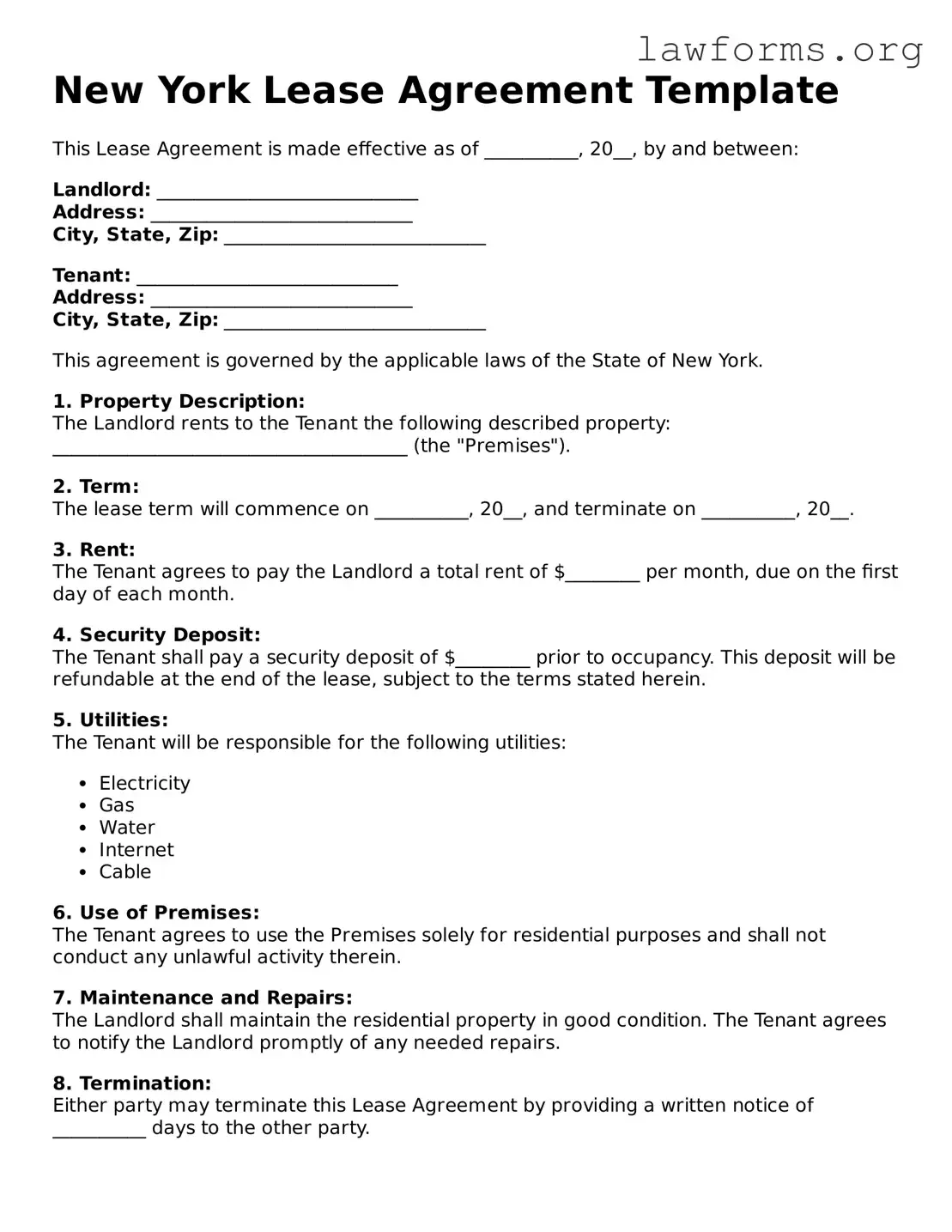New York Lease Agreement Template
This Lease Agreement is made effective as of __________, 20__, by and between:
Landlord: ____________________________
Address: ____________________________
City, State, Zip: ____________________________
Tenant: ____________________________
Address: ____________________________
City, State, Zip: ____________________________
This agreement is governed by the applicable laws of the State of New York.
1. Property Description:
The Landlord rents to the Tenant the following described property:
______________________________________ (the "Premises").
2. Term:
The lease term will commence on __________, 20__, and terminate on __________, 20__.
3. Rent:
The Tenant agrees to pay the Landlord a total rent of $________ per month, due on the first day of each month.
4. Security Deposit:
The Tenant shall pay a security deposit of $________ prior to occupancy. This deposit will be refundable at the end of the lease, subject to the terms stated herein.
5. Utilities:
The Tenant will be responsible for the following utilities:
- Electricity
- Gas
- Water
- Internet
- Cable
6. Use of Premises:
The Tenant agrees to use the Premises solely for residential purposes and shall not conduct any unlawful activity therein.
7. Maintenance and Repairs:
The Landlord shall maintain the residential property in good condition. The Tenant agrees to notify the Landlord promptly of any needed repairs.
8. Termination:
Either party may terminate this Lease Agreement by providing a written notice of __________ days to the other party.
9. Governing Law:
This Lease Agreement shall be governed by and construed in accordance with the laws of the State of New York.
10. Signatures:
By signing below, both parties agree to the terms of this Lease Agreement.
Landlord Signature: ____________________________ Date: ________________
Tenant Signature: ____________________________ Date: ________________
